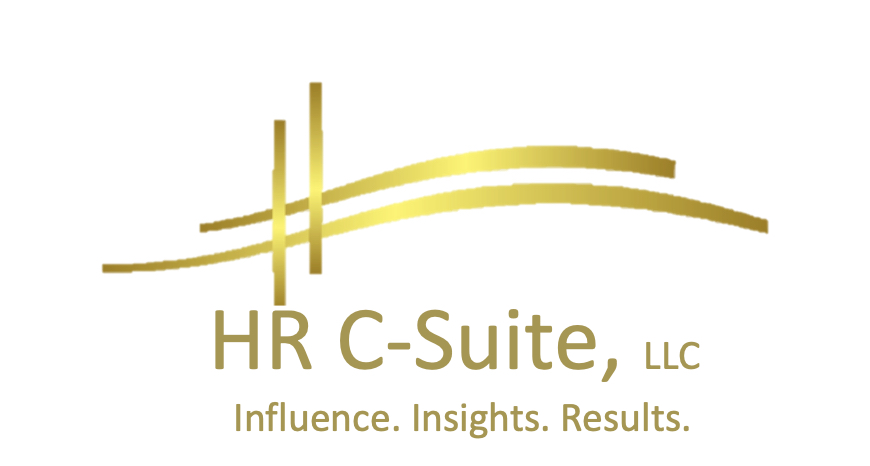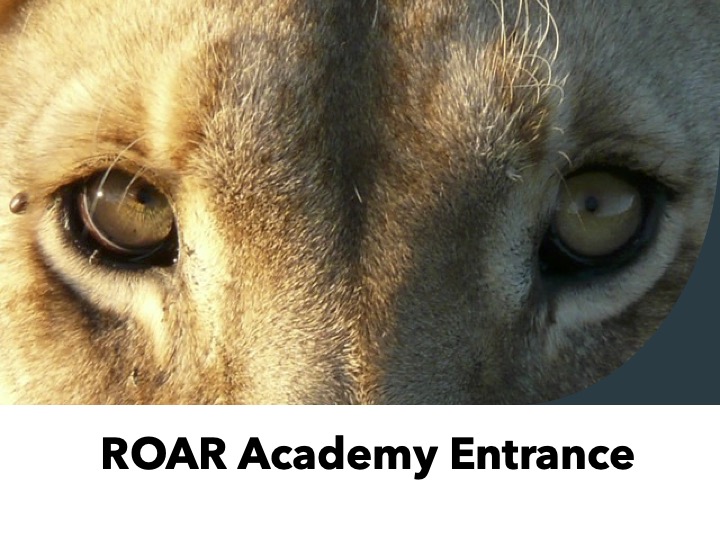One of the more sinister group of creatures of the Star Trek genre are The Borg, a race  of ruthless, relentless, cybernetic life forms whose sole purpose is domination of the universe. Their motto is: ‘Strength is irrelevant, resistance is futile. We wish to improve ourselves. We will add your biological and technological distinctiveness to our own. Your culture will adapt to service ours.” This certainly sounds like a very bad hostile corporate takeover. A few friends of mine worked at the former Daimler-Chrysler, when Chrysler was assimilated (as they put it) by Daimler-Benz. The joke was “How do you say Chrysler in German? Daimler, the Chrysler is silent!” These employees certainly felt like they were part of a Borg collective!
of ruthless, relentless, cybernetic life forms whose sole purpose is domination of the universe. Their motto is: ‘Strength is irrelevant, resistance is futile. We wish to improve ourselves. We will add your biological and technological distinctiveness to our own. Your culture will adapt to service ours.” This certainly sounds like a very bad hostile corporate takeover. A few friends of mine worked at the former Daimler-Chrysler, when Chrysler was assimilated (as they put it) by Daimler-Benz. The joke was “How do you say Chrysler in German? Daimler, the Chrysler is silent!” These employees certainly felt like they were part of a Borg collective!
 All kidding aside, as an HR professional, corporate takeovers, especially hostile ones can induce organizational panic, uncertainty, and frame breaking change. That change can include a radical departure from the familiar and established corporate core competencies. Plus throw in existing agreements with collective bargaining organizations that will either be radically changed or scrapped and a brand new organizational culture. Imagine IBM taking over Facebook. You get the picture! That is scary stuff to face. There is not a whole lot that can be done to establish control if you are on the receiving end of the takeover. Especially if the agenda of the dominant partner is a monument that is locked in quick drying cement!
All kidding aside, as an HR professional, corporate takeovers, especially hostile ones can induce organizational panic, uncertainty, and frame breaking change. That change can include a radical departure from the familiar and established corporate core competencies. Plus throw in existing agreements with collective bargaining organizations that will either be radically changed or scrapped and a brand new organizational culture. Imagine IBM taking over Facebook. You get the picture! That is scary stuff to face. There is not a whole lot that can be done to establish control if you are on the receiving end of the takeover. Especially if the agenda of the dominant partner is a monument that is locked in quick drying cement!
The other end of the spectrum is the establishment of an overseas operation. Preparing newly selected expatriate employees to begin their tasks of integration into the new host national culture to build a successful business operation. This will be the focus of this article. Despite the speed of communication, social media and a global marketplace, the differences between national cultures can still present hidden dangers and pitfalls that can bring a new business operation to a screeching halt.
The Borg’s “resistance is futile” approach in running that new overseas operation will do nothing more than create hostility and build resentment in your local national workforce. This could create major issues with your overseas clients. Many organizations understand that they will be operating in an off-shore location. Some are certainly cognizant that there are language and cultural barriers in dealing with local national customers and clients. But most forget about the danger in operating their off-shore location in exactly the same fashion and using the same organizational culture that is used in their domestic operation. The organizational leader and HR professional who is confident that the way we do things in Dubuque, Iowa will work just fine in the new operation in Nairobi, Kenya is naïve at best and supremely arrogant at worst.
Dr. Geert Hofstede (2011), Professor Emeritus at Maastricht University, has conducted extensive research in the field of international cultures and their effects on off-shore business operations. On his website he bluntly states; “Culture is more often a source of conflict than of synergy. Cultural differences are a nuisance at best and often a disaster."
This doesn’t mean the heavily touted concept of diversity is a myth. This means that we need to be cognizant of the cultural differences, work within the framework of those differences and not bring our assumptions to the table based on our own cultural perspectives. Otherwise we are asking for BIG trouble for our off-shore operation. While there are some basic emotions and behavioral attributes that are the same for all human cultures, the expression of those attributes and emotions differ greatly from population to population based on their accepted cultural norms.
Hofstede argues that when a business organization attempts to manage an offshore operation and host nation employees based on their own national culture perspective. Bringing an organizational culture based on the domestic cultural orientation, confusion, misunderstanding and organizational failure can be the result. Unlike the Borg, what is futile is not resistance. It is trying to force host nation employees to adapt to your organizational culture based on your own national cultural perspective.
To assist private and public sector organizations engaged in off-shore operations, Dr. Hofstede has developed a matrix of dozens of countries based on five cultural dimensions.
He defines these dimensions in this way:
Power distance: ...the extent in which a society accepts the fact that power in institutions and organizations is distributed unequally.
- Uncertainty avoidance: ... (the) extent a society feels threatened by uncertain and ambiguous situations and tries to avoid these situations by providing greater career stability establishing more formal rules, not tolerating deviant ideas or behaviors, and believing in absolute truths and the attainment of expertise.
- Individualism/Collectivism: Individualism implies a loosely knit social framework in which people are supposed to take care of themselves and their immediate families only, while collectivism is characterized by a tight social framework in which people distinguish between in-groups and out-groups; they expect their in-groups (relatives, clan, organization) to look after them, and in exchange for that they feel they owe absolute loyalty to it.
- Masculinity: …It encompasses its opposite pole, Femininity. Measurements… express the extent the dominant values in society are “masculine” that is assertiveness, the acquisition of money and things and not caring for others, the quality of life, or people…” (Hofstede, 1980, pp. 45-46).
- Long term orientation/short orientation. Hostede asserts that this dimension discovered by the research of Chinese scholars, is values based and multinational in scope. According to Hofstede, the long term orientation values are perseverance and thrift whereas the values associated with short term orientation are based on the values of demonstrating respect for tradition, fulfillment of social obligations and saving face (Hofsede, 2011).
When the CEO gleefully announces that”We are going to establish our first office overseas!”, the organization needs to pause before the “bubbly” is broken out and toasts are raised.
There are two major steps must occur first in preparation:
Development of a Global Strategy. A global strategy is strategic and international in scope versus one that is mere extension of its domestic strategy. Strategic intent provides the over-the-horizon view of the direction the organization is to take on its competitive advantage journey. The formulated strategy is the concept and information required for the organization to win, based on a unique set of sustainable holistic activities designed to achieve that competitive advantage in a global market. Strategy implementation is about leader modeled behavior and bold moves, follower buy-in, a congruent organizational culture and change management and commitment at all levels of the organization. On this same theme, Gaur (2006) asserted “globalization has altered all aspects of business and to compete successfully in this environment a different set of competencies is needed” (p.150).
Alignment of Human Resources (HR) with Global Strategy. Far too many organizations view the HR function as merely consisting of compensation, benefit and personnel administration and is strictly operational in nature and not strategic. In essence, the global enterprise must ensure its human resources offices are prepared and have the resources to train and educate their employees to operate in an overseas, cultural diverse environment versus just in an expatriate enclave. This effort includes the development and implementation of a strategic human resources plan that is aligned with the organization’s global strategy (Ajarimah, 2001, Pucik & Saba, 2006, Mendenhall & Oddou, 1986, Tung, 1981, Brewster, Sparrow & Harris, 2005).
The development of a Hybrid Organizational Culture and the development of organizational cultures certainly take time. But there are some shortcuts that can be taken to build that hybrid culture. To start, determine the baseline culture of your own organization by conducting an internal environmental scan. A good survey instrument to use is The Organizational Culture Assessment Instrument (OCAI) by Quinn and Cameron (2011).
This instrument measures your current and preferred culture. The next step is to assess behaviors and attitudes to compare with those in the host nation where operations will be established. The second instrument that that is recommended for this step is one by Hofstede (1980, 2001) or Furrer, Liu and Sudharshan (2000) ( as cited in Taras, 2008). Both of these instruments will provide a picture of your organization based on Hofstede’s Five Cultural Dimensions. Click here for a view of these instruments as well as several others.
After the baseline organizational culture is established both from an operational and cultural dimensions perspective, and an analysis of the index scores found on Hofstede’s website for the cultural dimensions of the country or region you plan to operate in has been conducted, your organization should have a clear picture of the potential problems with your current organizational culture. From there you can determine what steps are needed to resolve those issues in creating a hybrid operational culture for the new off-shore enterprise.
The reason why this hybrid organizational culture is so critical is because as demonstrated in the work of Hofstede (1980). The use of management theory to affect organizational climate and culture must be modified in order to be congruent with the local operating national culture. Shimoni and Bergmann (2006) further argued that when local operating national culture combined with local management culture, the corporate culture is more effective than a standard multicultural approach. This means the foundation culture of your organization must be modified based on the local operating national culture.
How prepared is your organization to send expatriate employees off-shore?
Now that you have a good idea of what your current operational organizational culture  looks like and what the new hybrid culture will consist of in terms of emulated and modeled behaviors, there are other actions that will be necessary to prevent setting your expatriate employees up for failure. Ultimately you can minimize the possibility of them being perceived as a Borg Colonizer.
looks like and what the new hybrid culture will consist of in terms of emulated and modeled behaviors, there are other actions that will be necessary to prevent setting your expatriate employees up for failure. Ultimately you can minimize the possibility of them being perceived as a Borg Colonizer.
Earlier, I discussed the importance of having a human resources strategic plan that is aligned and integrated with the organization’s global strategy. This plan should contain four major components that address:
- Education and Training,
- Organization 360 Evaluation,
- Coaching and Mentoring, and
- Grooming.
The components of Competency based Recruiting, On-Boarding and Succession Planning will be discussed in future articles. The aforementioned four components will enable the organizationin a holistic integrated effort; align the expatriate skill sets with the hybrid organizational climate and culture, organizational core competencies, vision and values and organizational strategic direction.
These components are an integral part of the following five steps:
1. An organizational communication plan is developed and implemented to make potential expatriate employees and leaders aware of what is being done, the need to change and develop desired behaviors associated with the needed skill sets. The behaviors are taught, modeled by leaders and employees selected as expatriates are given time to emulate those behaviors.
2. Education and Training: The education and training component covers an orientation of the host country including its culture, customs, taboos and language. Subjects such as change management, conflict management, communication, coaching, building and participating in successful teams in an overseas environment, building trust, leading through organization vision and values and customer service should be included as part of the curriculum. These are recommended aspects of the education and training component to be undertaken prior to the assignment and that employees engaging in extensive travel be given an abbreviated version of the curriculum. This type of education and training program will also serve as part of the socialization process for the prospective expatriate employee.
As part of the education and training component, it is critical to incorporate the behaviors associated with the hybrid organizational culture into the workplace to acclimatize current employees. It will help reduce power distance and strengthen the sense of organizational commitment while retaining the ability to facilitate organizational learning and the change of long-held paradigms that hinder the establishment of behaviors required in the new hybrid organizational culture.
This action would be of vital importance in organizations operating in international locations with national cultures reflecting high power distance, high uncertainty, and high collectivist, high masculinity and where the organizational culture strongly reflects that national culture. Continual communication and modeling by the leadership is essential along with continuous dialogue and a strong change management program.
3. Organization 360 Evaluations: The Organizational 360 component will facilitate the free flow of ideas, employee input and the building of trust between employees and their leaders. The result will be constructive dialogue and engagement that will be expressed in useful feedback for improving the new hybrid culture.
4. Coaching and mentoring: Establishment of a formal coaching and mentoring program will strengthen ties between employees and their leaders and allow the free flow of dialogue to strengthen and improve the organization instead of focusing on someone’s shortcomings. This will allow employees and teams to resolve their own issues and leaders become problem resolution facilitators instead of the problem solvers. This effort will increase employee confidence, enhance productivity, reduce power distance and create a stronger organization.
5. Grooming. Grooming as part of the succession planning component of the human resources strategic plan, will identify rising stars that will do well in an expatriate assignment and position them for other key assignments. It is important to note that while an individual may be identified as a rising star, they may not be suited to serve the organization in an overseas assignment. It is better to screen them out before they end up overseas and major issues arise that may prove embarrassing to the organization, its reputation and damage key client and customer relationships.
As an organization grows and expands its operations into new overseas locations, it is important to note that the baseline hybrid culture also expands and evolves to adapt to local national operating cultures encountered as a result of that expansion (Shimmoni & Bergmann, 2006). The change management process would also evolve to meet the expansion to prepare the workforce for those organizational cultural changes (Atkinson, 2005), (Kotter, 1995), (Tishman, Newman & Romanelli, 1986) and (Zeira, 1974). These evolutionary efforts will create an environment to fully develop a true transnational employee who can easily transfer to another country or region, bring the hybrid organizational culture with them, assimilate into the host nation operating culture and establish the operations of your organization to bring the best of both worlds.
You know, perhaps the new Counter-Borg motto will be “Our strength is combined understanding and respect, resistance to change is natural. We wish to improve each other. We will embrace our distinctiveness and learn from each other. Our cultures will adapt to serve one another.” This motto may make for a boring Star Trek movie, but it will certainly make for having an exciting and successful overseas enterprise!
References
Ajarimah, A. A. (2001). Major challenges of global leadership in the twenty-first century. Human Resource Development International , 4 (1), 9-19.
Atkinson, P. (2005), Managing resistance to change, Management Services-Spring.
Brewster, C., Sparrow, P. & Harris, H. (2005, June). Towards a new model of globalizing HRM. International Journal of Human Resource Management, 16 (6), 949-970.
Gaur, A. S. (2006). Changing demands of leadership in the new economy: A survey of Indian leaders. IIMB Management Review. 18(2), 149–158.
Hofstede, G. (1980). Motivation, leadership, and organization: Do American theories apply abroad? Organizational Dynamics, (9)1, 42-63.
Hofstede, G. (2011). Geert Hofstede Cultural Dimensions, Retrieved October 18, 2011 from http://www.geert-hofstede.com/
Kotter, J.P. (1995), Why transformation efforts fail, Harvard Business Review,(Electronic version), 73(2) 59-67.
Mendenhall, M. & Oddou, G. (1986). Acculturation profiles of expatriate managers: Implications for cross-cultural training programs. Columbia Journal of World Business, (Electronic version), 21(4), 73-79. .Retrieved May 7, 2007, from Business Source Premier database.
Pucik, V. & Saba, T. (2006) Selecting and developing the global versus the expatriate manager: A review of the state-of-the-art. Human Resource Planning, 21 (4), 40-54.
Quinn, R. & K. Cameron, (2011). The organizational cultural assessment instrument. Retrieved October 18, 2011 from http://www.ocai-online.com/
Shimoni, B. & Bergmann, H. (2006), Managing in a changing world: From multiculturalism to hybridization-the production of hybrid management cultures in Israel, Thailand and Mexico, The Academy of Management Perspectives, (20)3, 76-89.
Taras, V. (2008). Catalogue of Instruments for Measuring Culture, retrieved October 18, 2011 from http://people.ucalgary.ca/~taras/_private/Culture_Survey_Catalogue.pdf
Tishman, M.L.,.Newman. W.H. & Romanelli, E. (1986), Convergence and upheaval: Managing the unsteady pace of organizational evolution, California Management Review, 30(1), 29-43.
Tung, R.L. (1981). Selection and training of personnel for overseas assignments. Columbia Journal of World Business. 15: 68-78
Latest posts by Colonel (Ret) Terry Fobbs, PhD (see all)
- The Change Gremlin: Is Feeding It After Midnight An Urban Legend? - October 31, 2022
- I’m Spartacus: A Culture of Courage - October 12, 2020
- Dealing with the Workplace Tasmanian Devil - October 31, 2019










